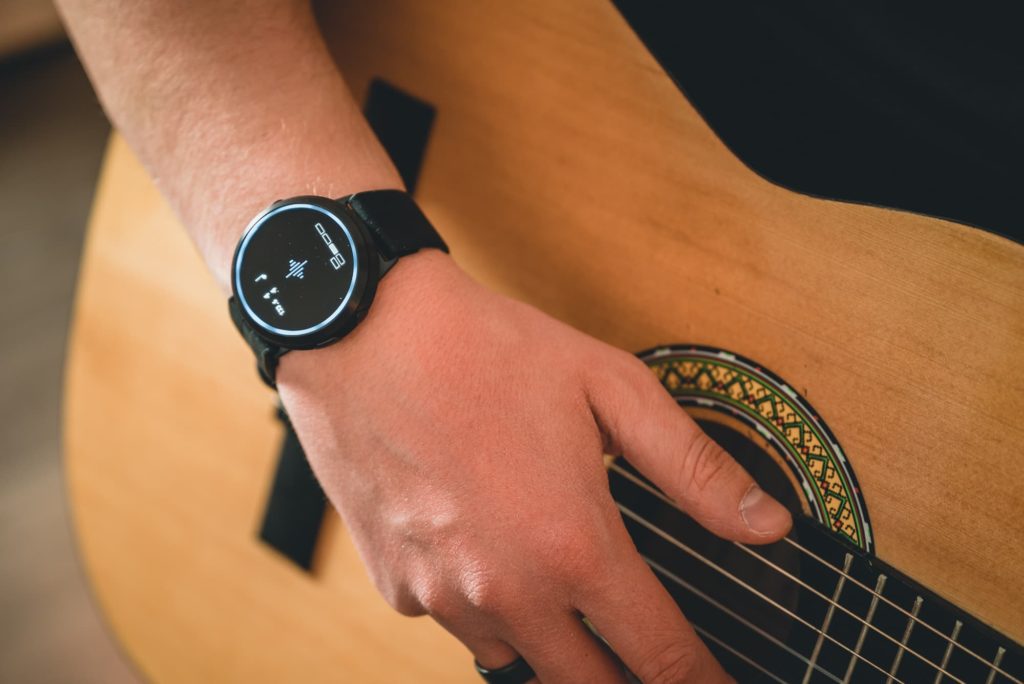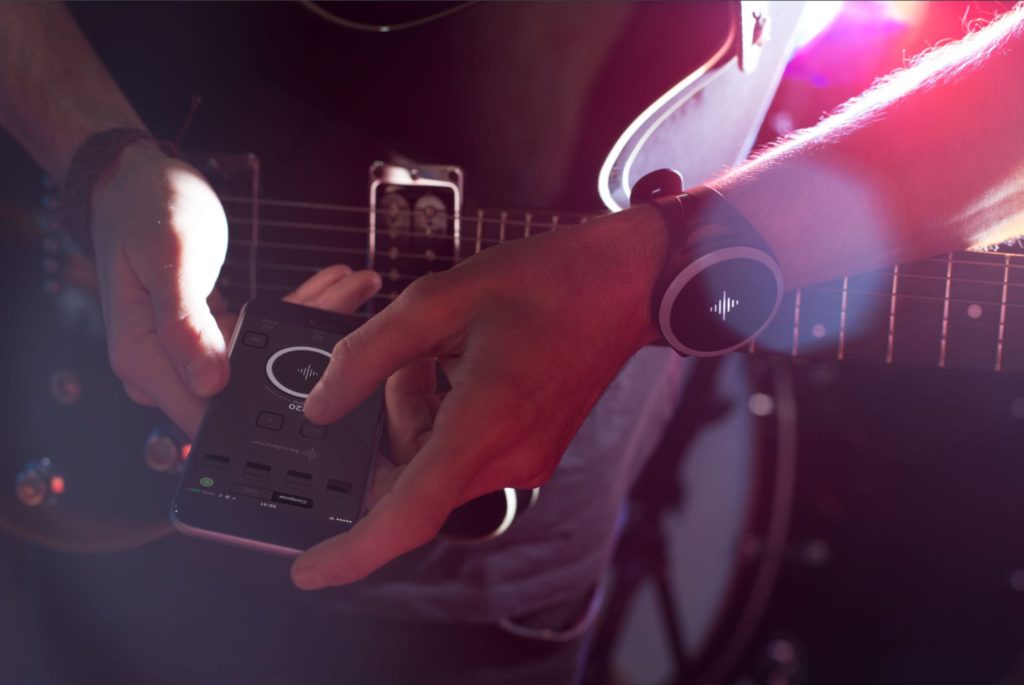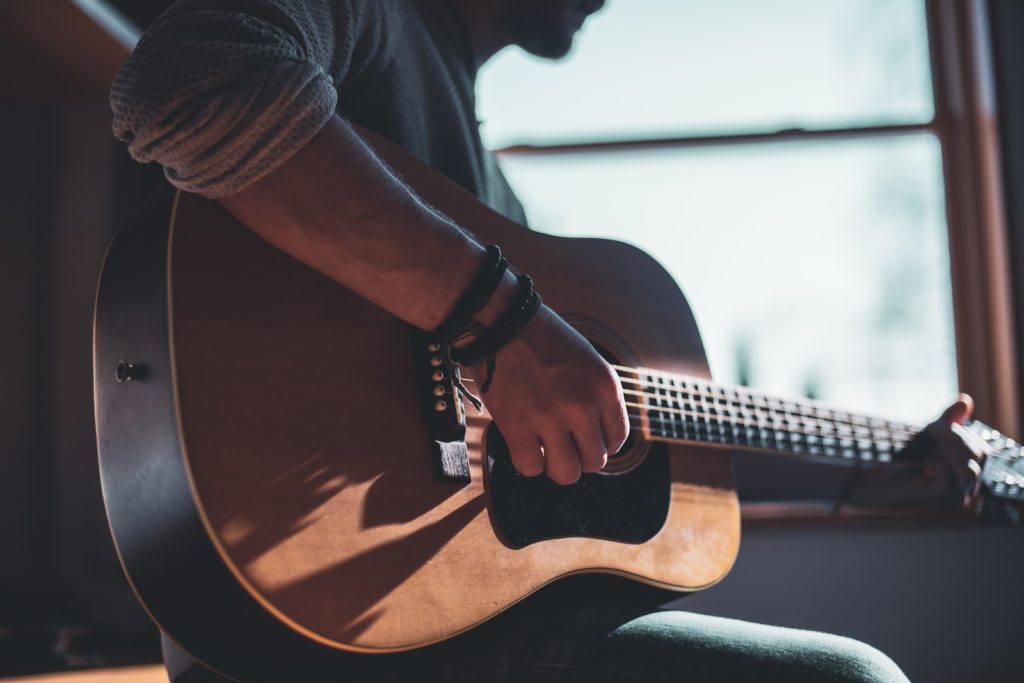
Part 2 of this post continues with suggestions and metronome exercises for your guitar practice. You can read part 1 here. This time we will be a little more hands-on, to answer so your most burning questions about how to practice with a metronome can be answered.

Practicing scales may not be the most loved exercise out there, but any professional guitar player will tell you that you do need to spend some time with them in your daily practice, to help you develop your musicality. Scales can help to develop your “vocabulary” so to speak, and also your muscle memory. The same is true for chords, but we will come to that.
In guitar, practicing scales usually involves being able to connect them across the guitar neck, practice your alternate picking accuracy and even legato – which can be a bit more difficult to practice with the metronome because we have the tendency to rush.
Here is a quick exercise example for practicing scales on the guitar:
– Use a scale pattern that you know well and set the metronome to a comfortable speed where you can play quarter notes (one note per beat).
– Let’s say you start at 80 BPM. Increase or decrease according to your skill level. Every note should be clearly heard/executed and on the beat. Focus on playing the notes with accuracy.
– Increase the metronome speed as you feel more comfortable with that tempo. You can do it in increments of 5-10 BPM, for example.
As soon as you are at ease playing one note per beat, repeat the whole exercise from the top but this time using eight notes (two notes per beat). Increase tempo as you hear that you’re playing two equally spaced notes per beat and accurately. You can do the same with sixteenth notes, triplets and other beat subdivisions.
All in all, you have two ways of increasing the speed of what you play in reference to the metronome; by increasing the BPM while maintaining the same beat subdivision; or by maintaining the same BPM and increasing the number of notes per beat.

The previous approach is also valid for practicing chord transitions and your right-hand rhythms. Chord transitions can be practiced like the following:
– Pick two chords you already know well so that you don’t need to think about where your fingers need to go. Set the metronome to 80 BPM and change chords every 4 beats (adjust the BPM as necessary).
– Play each chord once without falling behind tempo; play exactly on the beat.
– Using the same BPM, play all the 4 beats per measure before going to the next chord.
– Practice the same chord transition but now change every 2 beats. Once you are also comfortable with this, change chords every beat. Mind you that the metronome BPM is not changing, although you can always adjust it to more challenging speeds.
The previous exercise is only aimed at you getting better on chord transitions. Instead of working with only two chords, you can start introducing more chords in your exercise. You can also do these exercises every time you encounter a chord you are having more difficulty with.
On the other hand, strumming, or doing rhythms with your right hand, means that you will be dealing with some rhythmic pattern that is usually played over each chord. This means that you will be dealing with two things at a time – doing the chord transition and strumming. These rhythmic patterns can get longer and/or more complicated, but for now let’s focus on simple rhythms, such as these:

– For instance, play example 3 on each chord. Again, focus on a couple of chords first and work on each rhythm, one at a time. If needed be, practice your right-hand rhythm first using only one chord.
– Once you get your rhythm right, you apply it to your chords and start practicing with the metronome, slowly building up to the desired speed.
You will be maintaining the same note subdivision or note rhythmic relationship with the beat as you increase the metronome speed.
A metronome is also very useful to consistently play a whole song at a given tempo. The first thing you need to do is to find out the tempo of the song you are learning, or at least be as close as possible to it. You can press play on the song you want to learn and tap to get a feel for the tempo. In this case, the Soundbrenner metronome app allows you to tap your tempo and figure out the BPM which you can later recall next time you practice.
Once you have set the metronome to the required tempo, find out the time signature and configure it in the metronome as well. Then take your time counting and feeling the tempo until you are accustomed to it as you listen to the song.

When you start working on chords, licks, riffs of the song, if you feel that you are pushing too hard or that the song has more demanding sections, don’t be reluctant to slow down the metronome speed. In fact, I highly recommend it since it can be very helpful to better perceive things like harmonic rhythm (when chords change), the different rhythmic subdivisions, what notes fall on what beats and so on.
Once you’ve figured that out, it’s time to start practicing using some of the previous advice. Start slow and build up from there until you reach the desired tempo. Remember to always focus on being accurate with beats and with your playing. Avoid being sloppy just for the sake of playing at the desired speed.
One important thing to consider is that you try to divide the song into parts that you need to practice. Divide the song into smaller sections, as needed, and focus on those parts instead of playing through the whole song all the time, from beginning to end, until you get it right. There is a time for that but for now, just focus on whatever is stopping you from playing that piece of music in a fluid manner and use the metronome to assist in your practice sessions.

I have already mentioned playing with different subdivisions as one of the ways of increasing speed while maintaining the same BPM on your guitar metronome exercise. The following is yet another example of how you can practice beat subdivisions while practicing pick tremolos:
– Set your metronome to 80 BPM in a 4/4 time signature.
– Now play eight notes (two notes per beat) and accent every beat (play harder in your pick downstroke). Remember that you have to play two equally spaced notes, on the downbeat and the other on the upbeat
– As soon as you are comfortable with playing eight notes, play triplets (three equally spaced notes in a beat) while maintaining the previous tempo. You will notice that the on-beat accent happens every other time, on the downstroke or upstroke.
– When you move to sixteenth notes, you will be playing four notes during a beat. Remember to accent every first beat. This time it will fall on downstrokes.
You can also apply this exercise to scales and accent every first beats of the subdivision you are working on. As you progress through different subdivisions, like quintuplets or septuplets, which are probably less common on your listening experience, it becomes increasingly difficult to subdivide the beat. Some people get used to counting numbers and equally fit them on each beat before they pick up their instrument, so that they get a feel for it beforehand.
Other people may use syllables from words to help them feel the beat subdivisions. You could use the word “met-ro-nome” which has 3 syllables and practice triplets. This is arguably a comfortable word to use while counting triplets and for that reason, you can always take a look at other proper beat subdivision systems that use syllables such as Konnakol. I will not be approaching this system here since it would go beyond the scope of this post but I urge you to check it out.
Next time we meet, I will be presenting you with more exercises for your guitar practice with a metronome, this time to build up speed and other invaluable benefits that you get from using a metronome to assist throughout the journey of your musical development so, stay tuned.
About the author:

Pedro Murino Almeida is an Award-Winning composer with the musical project Follow No One, expert musician and experienced music teacher. He maintains a blog called Beyond Music Theory with the aim of providing tools and instruction for beginning to advanced music students and those wishing to learn about music theory, how to use it and improve their songwriting and music production skills.
Soundbrenner is a company dedicated to helping musicians stay focused on what truly matters: their music. By creating innovative devices, such as Soundbrenner Pulse and Core, our goal is to deliver the best possible practice experience for musicians. Click here to find out more.
Got a question about Soundbrenner wearables? Reach out to us at [email protected], we’re happy to help!